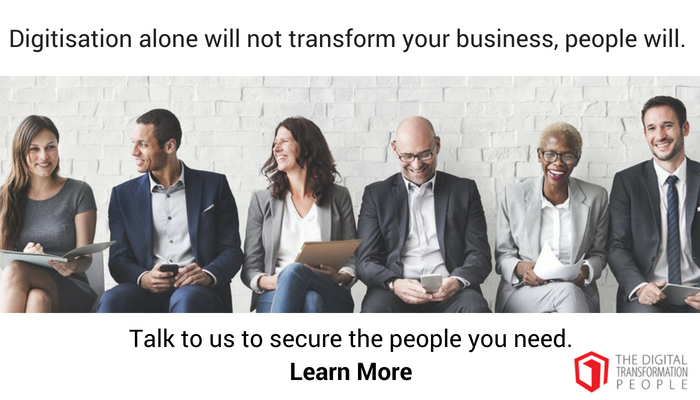Avast is the global leader in next-gen cybersecurity products for consumers and businesses, operating across 150 countries, protecting over 400 million people online, preventing 3.5 billion attacks every month.
“Working with DWG was a great experience. Simply by getting stuck in, identifying the challenges and how to resolve, we now have a clear plan for the way forward.” VP Consumer Marketing & Online Brand Experience, Avast – HMA case study.
Avast’s challenge
Help was needed with one of their acquired brands – HMA – who were experiencing commercial performance issues. They needed to improve the end-to-end customer experience.
To increase acquisition, conversion, retention and improve advocacy of HMA brand in readiness for the mass-market.
Our approach
- A detailed delivery plan and delivery team. Defining a complex process, controlled to time and budget, with long-term ownership and execution stages.
- Collating significant insight on the current end-to-end customer experience including feedback, customer needs and competitive situation.
- Clarity on strategic questions on objectives, business model, target customers (current and future) and competitive positioning.
- Development of a best-practice customer experience benchmark to meet strategic needs and comparison to today’s situation.
- Identifying the differences between the two states and prioritising re-dress actions based on severity to customer, impact to business model, and transformation to the right competitive positioning. Ensuring a prioritised roadmap of benefits to the customer and company.
- Recommendations on changes needed within the organisation to accelerate ongoing customer-centric improvement.
- Clear communication and hand-over plan to ensure continuity of ownership.
Results
- An end-to-end customer experience-led redress strategy, with prioritised actions and effective hand-over, completed within four months, to time and budget.
- An approach to protect the current customer-base, while supporting the brand’s move to mass-market.
- Clarity for senior leadership on the priorities for rapid improvements, an ongoing customer-centric strategy and the identification of organisation changes needed to deliver rapid and continued success.
Moving to a customer-centric view of your business.
Avast is the largest internet security company in the world, made up of four brands. Their acquisition of AVG meant they also acquired a consumer VPN (Virtual Private Network) service called HMA.
The EVP, Sales and Marketing at Avast, engaged DWG because some commercial performance issues needed fixing at HMA.
He also wanted to help educate the business on the benefits of adopting a customer experience-led approach to its strategy, rather than a ‘build the technology and they will come’ philosophy.
The initial scope was to undertake an in-depth end-to-end customer experience review of the business, at a rapid pace. It took four months, with a very cost-effective budget.
The challenge: being customer, not technology focused.
An underpinning element of the approach was to not only achieve the redress plan for the brand but to ‘educate’ and inform senior stakeholders the importance to plan from a different perspective strategically; shifting from a technical-led focus to a customer-led approach.
The influence of digital technology on end-users is dramatic, leading to radical changes in behaviour and expectations. All companies should understand their customers are more demanding, impatient, informed and empowered than ever before. They are looking for things on multiple devices, with end-to-end experiences that are relevant, personalised, and without disjointed issues.
Customers now walk away from what they are doing if it does not instantly make sense. They will tell the world if it is a bad or boring experience. That one-way process – I am a company, and I will tell you is dead.
A clear plan of attack.
This assignment was a customer experience-led strategy. Although we were originally engaged to do a customer experience piece, it quickly became apparent that the approach needed to work out how to start to turn things around fast.
They knew they had some problems with the service – acquisition was falling, complaints were increasing, and online reviews were deteriorating.
We applied our Customer Experience-Led methodology, following very well-defined stages.
Within the first five days, we had created a clear and detailed project plan and project team (from DWG and HMA), iterating the process. Working out all of the actions needed, against the methodology and who would do them.
An insight-driven approach: balancing customer and company needs.
You need to look at ‘what types of insight’ from several perspectives. Although it is a customer experience-led approach, you cannot ignore the needs of the company and what the competition is doing. The approach should address both customer and company requirements while providing a clear, differentiated position from the competition.
You also need to get buy-in during this process, because it is inevitably going to turn into a change management exercise.
The Customer Experience insight.
Firstly we made sure we were clear on the definition of customer experience.
We then started on a customer experience audit. We cut the audit into two steps:
- Firstly, the flow – the processes that your customer moves through as they do things.
- Secondly, looking at features that fit within that framework – the proposition or pricing for example.
We looked at what was going well and not so well, end-to-end, from multiple viewpoints, choosing the likely scenarios that customers will go through. From brand proposition, the acquisition process, conversion points, retention and advocacy perspectives. What needed to be enhanced through that process, identified by expert review.
We asked things like, do you have a clear differentiation point within brand compared to your competitors? Are you solving those customer needs and positioning appropriately?
The insight was not only for existing but also future customers. The business was targeting an early adopter but wanted to move towards the early mass market. So we did some research to show the differences and needs.
Mapping the issues into the business model.
The audit made the issues clear and real to the senior stakeholder team. Going through the customer experience process showed that there were problems at conversion, finding the service, and also such elements as the cancellation process (which was having significantly negative impact to advocacy) – today’s prospects use reviews as a core determination to buy.
We then translated those customer issues, pictorially, into the underpinning business model (a subscriber management one). This showed the degrees of impact to the optimal business model and was very powerful because everyone instantly got it.
Post insight.
Post insight, the assignment for any senior team turns into ‘what is the strategy to turn this around?’
In this case, our research demonstrated that the rest of the market was not doing a good job either.
We advised they needed to ask ‘what is the right strategic customer experience for your customers, your ambitions, and to differentiate the brand versus your competitors’. Based on this we wrote a ‘strategic best practice’ blueprint for them, outlining what the experience should be at every point to achieve what they wanted from a competitive, customer and company perspective.
We then compared the two states and identified the delta, allowing the complete set of activities required to redress the difference. Next, we ensured the activities were prioritised to provide rapid customer and company benefit.
Changing in Stages.
You can change quickly, or you can do it in strategic stages. We structured the redress roadmap into three phases.
The first priority was a focus on ‘fixing broken things’ for their existing ‘early-adopter’ customers, which presented significant impacts to acquisition, retention and advocacy, and were easy to fix. Addressing the bad reviews, reverse the decline, improving retention and restarting positive momentum. For example, we recommended a change from a 30-day money back guarantee to a seven-day free pre-authorise trial.
The second priority phase was about fixing the harder but still important issues. Enhancing the service through important, easy-to-do innovation, beginning the shift towards the desired competitive position and address the needs of early mass-market customer target while continuing to protect the early adopters.
In the third priority phase, the focus was on the early mass-market and what the service needed to look like to accelerate penetration into that segment. Doing all of the hard innovations advancements (such as personalisation), that would make HMA a winning service in that emerging segment.
The timelines for each phase were informed by the capabilities and investments available in the business, resulting in a detailed delivery plan.
We then formally socialised it into the two groups; the senior team to get their buy-in, and secondly what we termed the ‘fix group’ – those who were going to execute the plan – this included a number of the ‘think’ team for consistency.
Strong communication aided the whole process. We were also able to help source and appoint the execution programme director – a permanent member of staff.
Business framework changes.
We recommended changes in the business framework, to speed up the redress actions needed and to ensure an ongoing customer experience-led approach. You need to shift your business – the structure and orientation of it – and it has got to be a continual process.
For example, you need to think about the ownership and organisational structure, the communication processes and the technology platform model that you need to support the desired customer experience.
If the supporting elements are not in place, it will take longer, and there is no guarantee that you will get where you need to be.
A customer experience-led approach – helping you to move up the digital transformation curve.
This engagement was an excellent demonstration of a trigger for stage two of your digital transformation evolution.
Stage two digital change is the realisation that you need to be more customer orientated, and the impact throughout the business. A focused customer experience-led strategic approach enables you to differentiate yourself from your competition and leads to stronger financial performance.
The customer experience-led approach touches your customer model, your GTM, technical, organisational and operational models. It leads to that bigger, stage two, end-to-end change.
Avast is a great example of a company that has gone through this, allowing them to start to develop a customer model that feeds into many other areas of the business.
Need help to become more customer-focused?
A customer experience-led approach brings multiple benefits if done correctly. However, it can be complex and sometimes is hard to know where to start and a workable plan of attack.
If you would like some support why not give us a call and take advantage of a free consultation and discuss your unique needs.
Article by channel:
Everything you need to know about Digital Transformation
The best articles, news and events direct to your inbox
Read more articles tagged: Customer Centricity, Customer Experience, Featured









